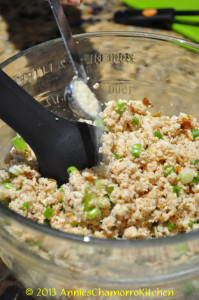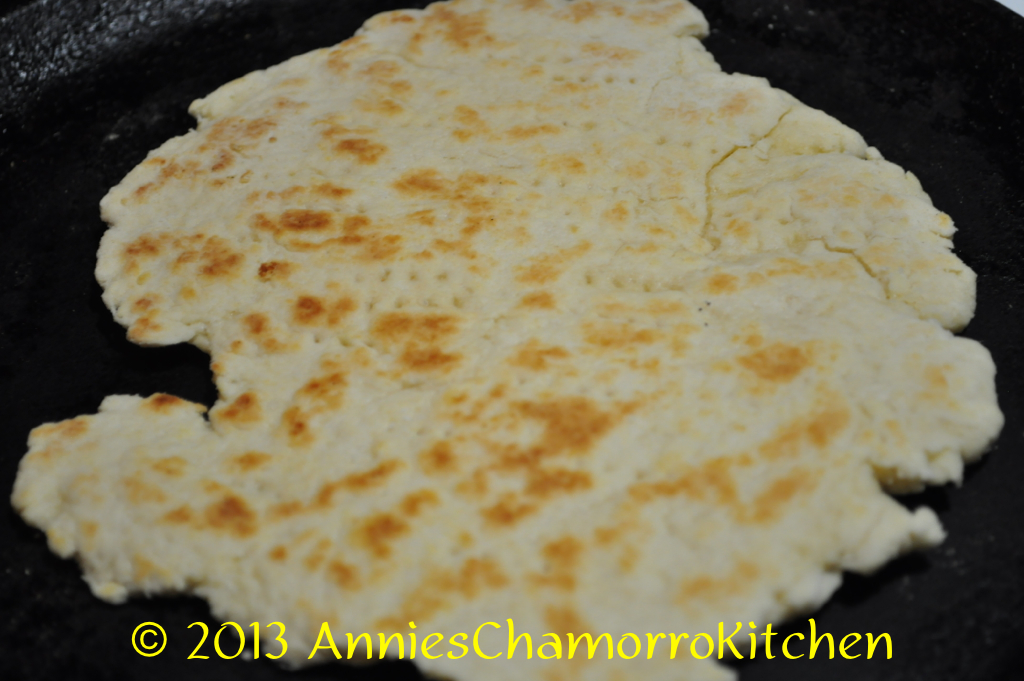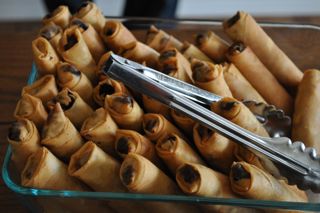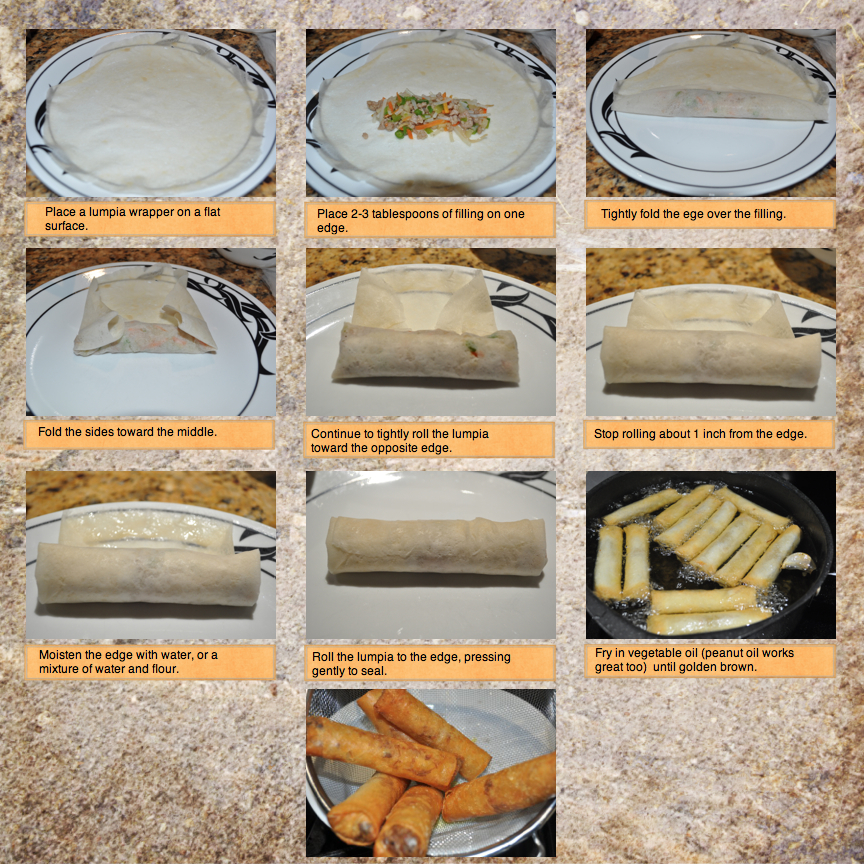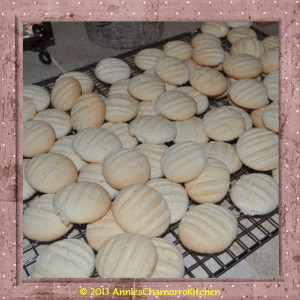
Kelaguen and Titiyas ~ both staples on a Chamorro fiesta table. But you don’t have to be invited to a fiesta in order to enjoy these tasty dishes — they are so easy to make that you can have it anytime you get the craving!
My two daughters (ages 11 and 15) prepared the dishes pictured in the photos below; if THEY can do it, so can you!
Give my super easy recipes a try. I think you’ll like them! 🙂
Annie’s Chicken Kelaguen
Ingredients:
- 1 small rotisserie chicken
- 6 stalks green onions
- 1 1/2 tablespoons lemon powder plus 3 tablespoons water (or use the juice of 1 large lemon)
- 2 teaspoons salt (more or less, to taste)
- Hot pepper, optional
- Freshly grated coconut (unsweetened), optional
Directions:
1. Debone the chicken; shred or cut into small pieces (I used a food processor to roughly chop the chicken).
2. Thinly slice the green onions then add it to the chicken.
3. Add the lemon powder, water, salt and pepper to the bowl of chicken; mix to combine. Taste; adjust seasoning if required.
4. Stir in the grated coconut (optional).
5. Serve with my super easy sweet flour titiyas (see recipe below) and enjoy!
Annie’s Sweet Flour Titiyas
Ingredients:
- 3 cups all purpose flour
- 4 teaspoons baking powder
- 1/2 teaspoon salt
- 3/4 cup coconut milk (see note below)
- 1/4 cup melted butter
- 1/4 to 1/2 cup cream of coconut (the sweet one, used for mixed drinks)
(see note below)
NOTE: If you don’t find or have any cream of coconut, just increase the coconut milk to 1 cup, and add 1/2 cup white granulated sugar. Follow the rest of the instructions below.
This is what the can of cream of coconut looks like. This is incredibly sweet so you do not need to add more sugar. Cream of Coconut is NOT the same as coconut cream (thick coconut milk).
Directions:
1. Mix the dry ingredients together in a large mixing bowl. Add the coconut milk, melted butter, and cream of coconut (start out with 1/4 cup; increase to a total of 1/2 cup, depending on how humid your day is–more humid means less liquid). Mix together until a dough forms; knead gently to form a smooth ball of dough.
2. Break off golf-ball sized pieces. Flour your rolling surface and rolling pin. Roll out the piece of dough into a flat disc (about 1/8-inch thick). Place the titiyas on a dry skillet; prick all over with a fork to prevent bubbling during the cooking process.
3. Pan-fry on a dry skillet over medium-low heat for about 3-4 minutes on each side, or until the bottom begins to turn a golden brown; flip over and cook the other side until it turns a nice golden brown. For thicker titiyas, cook over low heat for 4-5 minutes on each side; the titiyas is done when you gently press down on the center and it feels somewhat firm to the touch.
4. Place cooked titiyas on a plate covered with a clean kitchen towel to keep warm. Serve with my delicious chicken kelaguen. Enjoy!








